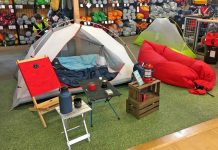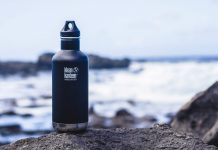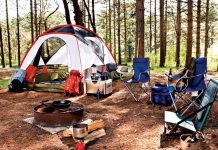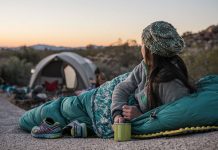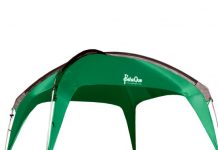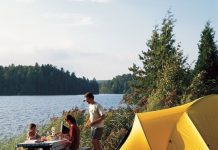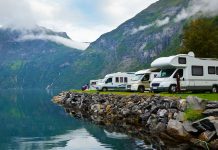Some people think that you don’t need camping bags when you are going out into the woods, but it really depends on how much stuff you are going to bring out there. Most people are going to need some kind of camping bag with them because there is usually a lot of stuff that you need out in the wild.
In fact, you are probably going to need more than one camping bag if you want to be able to carry everything to your campsite in one trip.
 There are a lot of different options when it comes to camping bags these days, and you may think that it isn’t really a big decision. Contrary to popular belief, you should actually put a good amount of time into your bag decision because you need to figure out which bag would be the right choice for the amount of equipment and supplies you bring when you go camping.
There are a lot of different options when it comes to camping bags these days, and you may think that it isn’t really a big decision. Contrary to popular belief, you should actually put a good amount of time into your bag decision because you need to figure out which bag would be the right choice for the amount of equipment and supplies you bring when you go camping.
Most people like to bring a lot of different things out in the wild, and that is why the biggest bags are usually the most popular out of them all.
The main reason that these bags are so important is that it is basically impossible to get everything into your car and then down to the campsite without them. You need an easy way to get all of your supplies from place to place, and there is nothing better than the various different bags for camping when it comes down to it. Whether your bag is large or small does not really matter as long as you can fit all of your equipment and tools in one place.
The variety found in camping bags
There are many different camping bags that you can pick from these days, and you should be able to find a fine selection at any local sporting goods store. If you can’t seem to find a good selection in your local area, you could always start shopping online to see what you can find on the Internet. Sometimes you can find great deals on items online because these stores get too much of certain products and need to get rid of them quickly.
The kind of bag you should be looking for really depends on what kind of person you are and what kind of things you bring when you go camping. There are many different styles to choose from on the bags, and you can also look for bags with secret pockets or other hidden possibilities. You should take a careful look at any bag before you buy it just to make sure that it is really the one that you want to use every time you go camping.
What do you need to put in your bag?
Make sure that you put all of the most important things inside of your camping bags first because those are the items that you really don’t want to leave at home. It’s usually a good idea to keep a checklist of the types of things that you need to bring. When you have a checklist, you are less likely to end up forgetting something at home.

